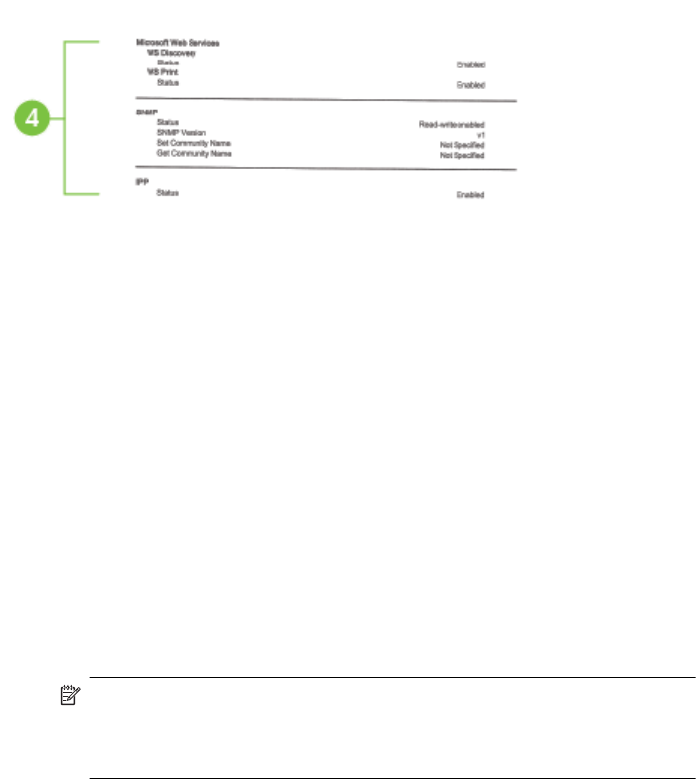
1. General Information: Shows information about the current status and active
connection type of the network, and other information, such as the URL of the
embedded web server.
2. 802.3 Wired: Shows information about the active Ethernet network connection, such
as the IP address, subnet mask, default gateway, as well as the hardware address
of the printer.
3. 802.11 Wireless (some models): Shows information about your wireless network
connection, such as the hostname, IP address, subnet mask, default gateway, and
server.
4. Miscellaneous: Shows information about more advanced network settings.
• Port 9100: The printer supports raw IP printing through TCP Port 9100. This HP-
proprietary TCP/IP port on the printer is the default port for printing. It is accessed
by HP software (for example, the HP Standard Port).
• LPD: Line Printer Daemon (LPD) refers to the protocol and programs associated
with line-printer spooling services that may be installed on various TCP/IP
systems.
NOTE: The LPD functionality can be used with any host implementation of
LPD that complies with the RFC 1179 document. The process for configuring
printer spoolers, however, might differ. See your system documentation for
information about configuring these systems.
• Bonjour: Bonjour services (which use mDNS, or Multicast Domain Name
System) are typically used on small networks for IP address and name resolution
(through UDP port 5353), where a conventional DNS server is not used.
• SLP: Service Location Protocol (SLP) is an Internet standard network protocol
that provides a framework to allow networking applications to discover the
existence, location, and configuration of networked services in enterprise
networks. This protocol simplifies discovery and use of network resources such
as printers, web servers, fax machines, video cameras, files systems, backup
devices (tape drives), databases, directories, mail servers, calendars.
Understand the network configuration page 83


















